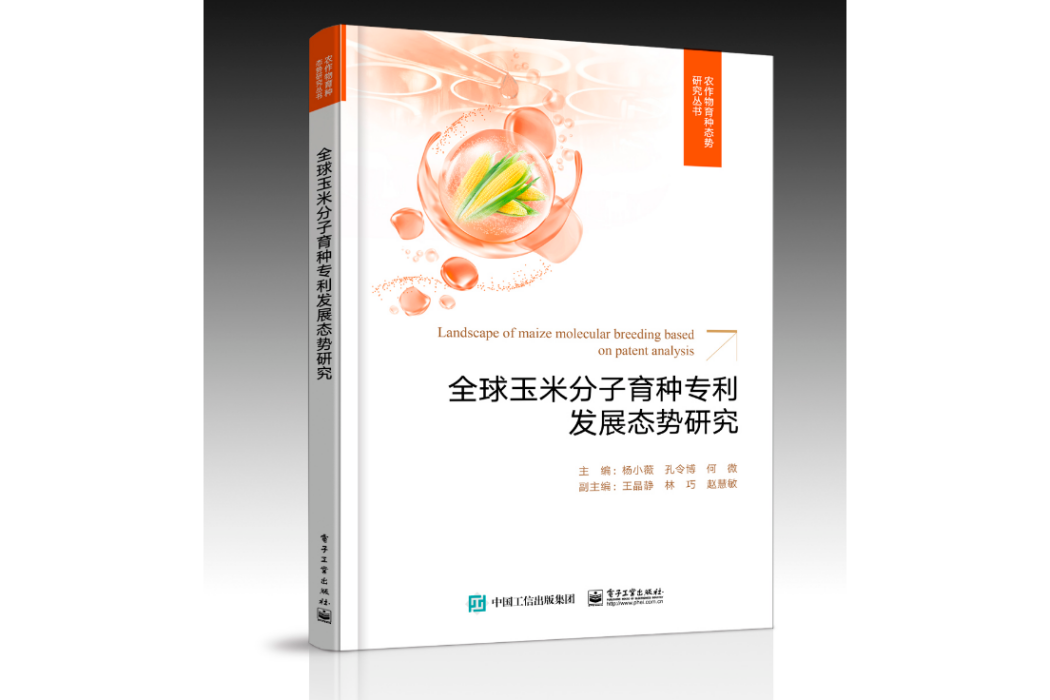《語篇研究》是2019年電子工業出版社出版的圖書,作者是王天華、林國麗。
基本介紹
- 中文名: 語篇研究
- 作者:王天華、林國麗
- 出版時間:2019年11月
- 出版社: 電子工業出版社
- 頁數:244 頁
- ISBN:9787121374456
- 定價:98 元
- 開本:16 開

《語篇研究》是2019年電子工業出版社出版的圖書,作者是王天華、林國麗。
《語篇研究》是2019年電子工業出版社出版的圖書,作者是王天華、林國麗。內容簡介語篇分析作為一門學科,開始於20世紀50年代到60年代,發展於20世紀70年代,成熟於20世紀80年代到90 年代。進入21世紀,語篇分析在...
《語篇研究》是2009年上海外語教育出版社出版的圖書,作者是田海龍。本書梳理了“語篇”及與“語篇”相關的一些概念,討論了“話語理論”和“批評性語篇分析”這兩種不同的語篇研究視角以及後者的研究方法。內容簡介 本書提出了“語篇社會...
《現代漢語語篇研究》是2009年11月浙江大學出版社出版的圖書,作者是聶仁發。該書主要敘述了現代漢語中的各語法結構及句子組成。內容簡介 《現代漢語語篇研究》堅持形式與意義相結合的原則,一些研究還採用了定量分析方法,得出了一些令人信...
《網路新聞語篇研究》是2016年南京大學出版社出版的圖書,作者是林綱。內容簡介 當前,網際網路已經成為新聞傳播領域中具發展潛力的重要新媒體。網路新聞語篇作為新時代公共話語的重要形式,不僅提供了關於社會事件的社會、政治、文化和經濟等多...
《文本關鍵字的語篇功能研究》是2020年中國社會科學出版社出版的圖書,作者是宋姝錦。內容簡介 《文本關鍵字的語篇功能研究》以功能語言學與篇章語言學為理論基礎與指導思想,將銜接連貫理論與互文性理論結合在一起,運用大量的實例與數據...
《語篇語言學研究》是2011年北京大學出版社出版的圖書,作者是姜望琪。內容簡介 由姜望琪編著的《語篇語言學研究》全面研究、探討語篇語言學的歷史及現狀。重點回顧了西方20世紀語言學研究的發展歷程,揭示了語篇語言學之所以興起,並逐漸發展...
《功能語義視角下的英漢語篇研究》是2020年4月中山大學出版社出版的圖書,作者是陳瑜敏。內容簡介 《功能語義視角下的英漢語篇研究/功能語言學論叢》用功能語言學相關理論分析英漢語篇特徵,語料包括英漢文化教材、英語文學原著與簡寫本、中國...
《多模態敘事語篇研究》是2015年4月哈爾濱工程大學出版社出版的圖書,作者是劉曉琳。內容簡介 《多模態敘事語篇研究》主要以Kress Gunther和Theo VanLeeuwen社會符號學框架下的視覺語法和韓禮德的功能語法為理論基礎,論述了各個模態資源之間的...
《語篇對比與翻譯研究》是2016年科學出版社出版的圖書,作者是李文戈。內容簡介 本書側重功能翻譯研究,既有微觀的描寫分析,又有巨觀的方法論證。語篇特徵——語言元功能——語篇類型是貫穿全書的主線。本書旨在通過語篇對比分析來探究...
《現代漢語新聞語篇的結構研究》是2008年出版的圖書,作者是婁開陽。內容簡介 《現代漢語新聞語篇的結構研究》主要內容:開陽研究新聞的篇章結構,採取的技術路線大致是:第一,遴選語料建庫。新聞體裁有多種,訊息較為簡單。凡事應先從簡單...
時體研究的語篇、情態整合視角——以“在”“著”為例 從人稱和“了2”的搭配看漢語傳信範疇在話語中的表現 單元四 話語標記研究 來源於完整小句的話語標記“我告訴你”現代漢語引證類傳信語“據說”和“聽說”的使用差異 應對形式...
本書借鑑文學領域的互文性理論,語篇分析理論和語體學理論,從屬性、結構、功能三個維度,聯繫語用過程中的各個要素全面分析了語體互文性的本質特點、語言表現和語言功能,力圖構建起能夠揭示語篇中語體使用規律的理論體系。旨在研究語體互文...
《英漢新聞語篇研究》是出版於2012-4的一部圖書,作者是楚軍。內容介紹 《英漢新聞語篇研究》將功能語言學、認知語言學和敘事學的理論和方法相融合,對英漢新聞語篇進行實證比較研究,重點探究了新聞語篇的認知敘事結構、新聞標題的功能、...
1.4.2 論文語類話語策略研究 1.5 研究的範圍、方法與意義 1.5.1 研究的範圍 1.5.2 研究的方法與語料 1.5.3 研究的價值與意義 1.6 結語 第二章 學術語篇與語類研究的一些基本問題 2.1 引言 2.2 學術話語與基於語類...
《語篇語義研究》是2010年上海交通大學出版社出版的圖書,作者是J.R.Martin。內容提要 本書為《馬丁文集》第2卷,收錄馬丁自20世紀80年代至今發表的14篇關於語篇語義研究的論文。馬丁在韓禮德思想的基礎上,重點發展了語篇語義層的語言學...
《語篇分析的理論與實踐:廣告語篇研究》是2001年1月1日上海外教出版社出版的圖書。作者簡介 黃國文(1956~),生於廣東,現為華南農業大學外國語學院院長、教授。著有:《語篇分析的理論與實踐——廣告語篇研究》等。內容簡介 《語篇...
本書系教育部人文社會科學研究"十五"規劃項目的結項成果。全書正文共有11個章節,分別是:(0)概念的界定;(1)語篇性的標準;(2)英語語篇的語用研究;(3)英語語篇的形式研究;(4)英語語篇的組織模式研究;(5)英語語篇的...
《語篇語法研究》是2016年北京師範大學出版社出版的圖書,作者是史鐵強。內容簡介 《語篇語法研究》借鑑了俄羅斯語篇研究成果,吸收中國傳統文章學和修辭學的合理成分,結合作者自身多年的語言觀察和教學實踐,系統地探討了語篇各層級的組織和...
《面向對外漢語教學的漢語語篇研究》是2009年5月1日中國社會科學出版社出版的圖書,作者是馬明艷。本書為從事對外漢語教學的教師提供一些具有套用價值的教學參考,有助於對外漢語教材語篇教學內容的選取與編寫。內容簡介 《面向對外漢語教學...
《語篇研究--跨越小句的意義(第二版)(中文導讀注釋版)》是澳大利亞著名的語言學家MARTIN和他的研究團隊在系統功能語言學理論和套用研究方面的最新力作,對系統功能語言學,話語語義學的研究者和話語分析的實踐者提供了很好的理論和時間...
《語篇研究導論》是2009年出版的圖書,作者是雷可瑪。內容介紹 《語篇研究導論》通過實例分析,深入淺出地、系統地介紹了語篇研究理論,為讀者從事文學研究打下了基礎。為方便讀者使用,《語篇研究導論》收錄了語篇研究領坷中使用頻繁的概念...
《功能語篇分析研究》是一本2010年12月1日在外語教學與研究出版社出版的圖書。本書主要講述了世界各地的系統功能語言學學習者和研究者對功能語篇理論的研究。內容簡介 在中國,該理論自20世紀70年代末由方立、胡壯麟、徐克容三位學者合作...
此前,我們一起完成了國家社科基金重點項目“外國學生漢語書面語習得與認知研究”(項目號08AYY003),這個課題的研究成果已經由北京語言大學出版社結集出版。出站之後,開陽仍然關注著外國學生的書面語語篇問題,現在擺在我們面前的新作《...
語篇語用學探討語法與語篇之間的關係,特別是語法範疇和句法結構在語篇層面上的使用和運作。也就是說,語篇語用學關注句法與語篇的界面,主要研究句法現象的語篇基礎和語篇動因,句法現象在語篇中的分布和語篇功能、語篇因素對句法結構選擇...
《漢語論辨體語篇研究》是2007年湖南師範大學出版社出版的圖書。內容介紹 《漢語論辨體語篇研究》是作者在其博士學位論文的基礎上修改而成的,是第一部研究漢語論辯體語篇的專著。結合語義表達的語法研究,借鑑系統論、資訊理論和篇章語言學...
第一部分 語篇本體研究 第一章 語篇的話題與主題 一、語篇話題 二、語篇主題 三、語篇話題延續、轉換與主題推進 第二章 語篇模式類型與語篇結構 一、主位、述位與語篇模式 二、五種語篇基本模式 三、語篇基本模式的複合與連合 四、...
類型、特點及產生的認知力,隱喻語篇的分類及內部組織形式,隱喻投射與不同語篇文體功能之間的關係,隱喻語篇多維分析及隱喻的言語之力等進行了多方面探索,為隱喻語篇研究提供了綜觀視角,豐富了隱喻語篇理論,並在一定程度上充實了語篇研究...
語義連貫是個十分複雜的問題,有時語篇的連貫取決於說話的前提和發話者與受話者雙方的共有知識。基本內容 語篇分析包括以下幾點:1、銜接手段:常見手段有:(1)語法手段(照應、替代、省略等)(2)辭彙手段(復現關係、同現關係等)...
《語篇反饋研究:基於社會認知理論》是一本2023年中譯出版社出版的圖書,作者是卞曉雲。內容簡介 《語篇反饋研究:基於社會認知理論》這本書詳述了一項關於中國外語教師語篇反饋的歷史個案研究, 揭示出在中國外語教學環境下針對大學生的英語...
《功能語言學與語篇分析研究》是2010年高等教育出版社出版的圖書,作者是黃國文。內容簡介 本輯收集的論文是從第十一屆全國語篇分析研討會(2008年8月18—22日)上宣讀的論文中挑選出來的。這次會議是中國英漢語篇分析研究會自成立(2007年...
